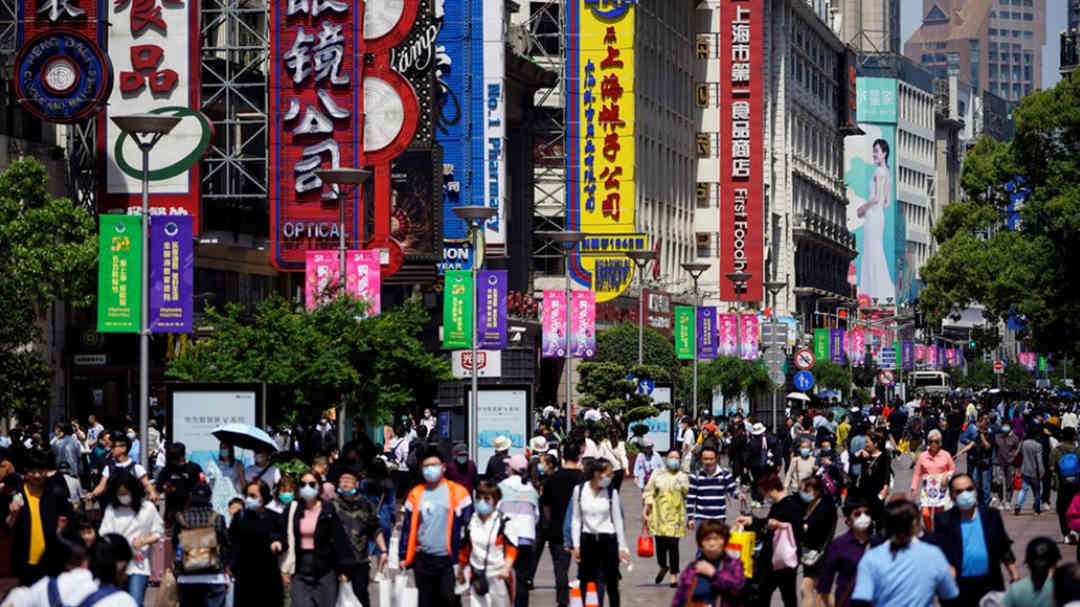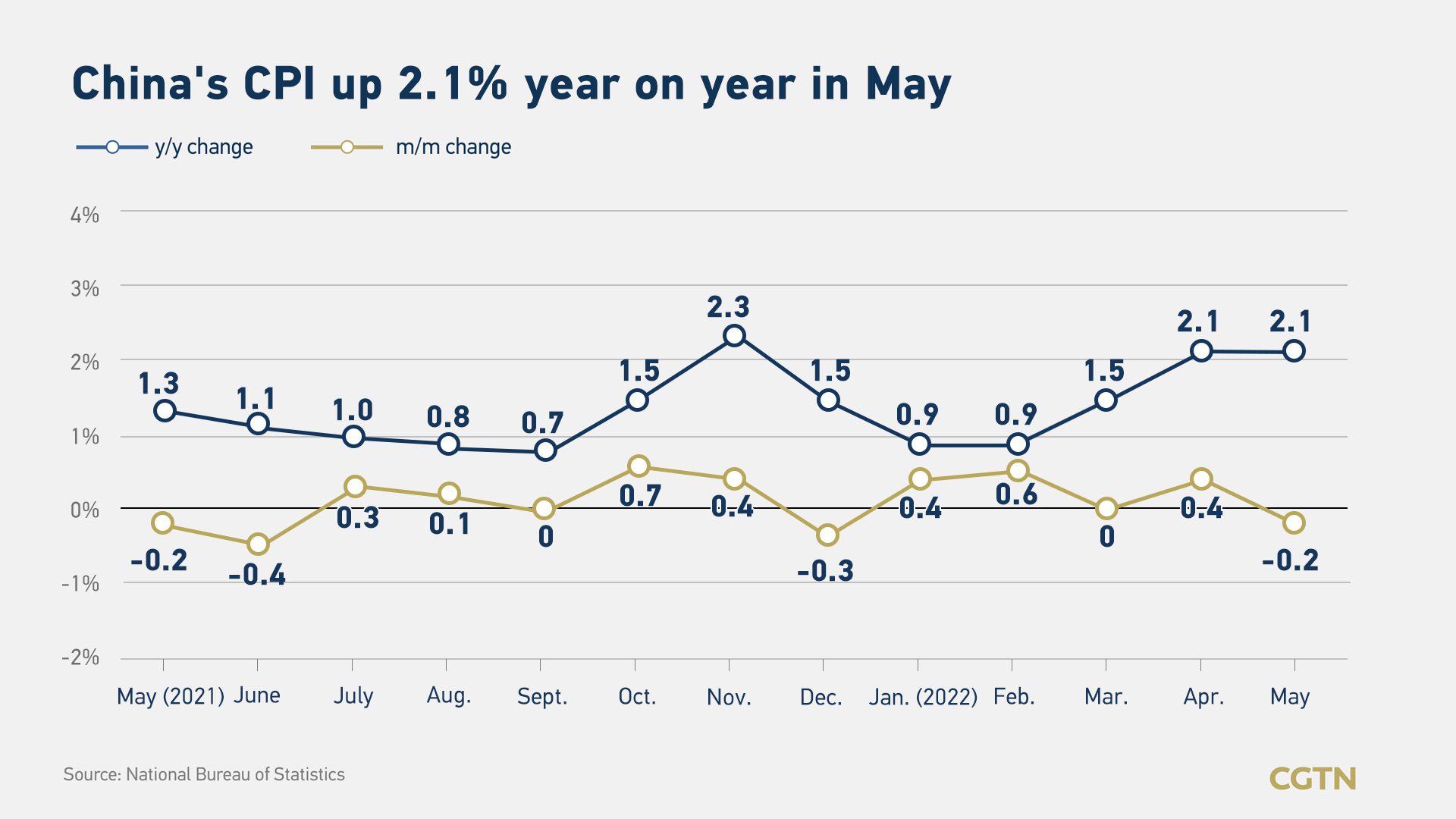
People walk along Nanjing Pedestrian Road, a main shopping area, in Shanghai, China, May 5, 2021. /Reuters
People walk along Nanjing Pedestrian Road, a main shopping area, in Shanghai, China, May 5, 2021. /Reuters
China's consumer inflation in May remained unchanged from April with sufficient market supply, while factory-gate inflation cooled to the lowest level in 14 months thanks to smooth key supply and industrial chains, according to the National Bureau of Statistics (NBS).
The country's producer price index (PPI) rose 6.4 percent year on year last month, following a rise of 8 percent in April, data from the NBS showed on Friday. It was the lowest reading since March 2021, and in line with the forecast in a Reuters poll.
"In May, local authorities and various departments efficiently coordinated COVID-19 control measures and economic development, and ensured smooth and stable supply and industrial chains for key sectors," said senior NBS statistician Dong Lijuan.
The consumer price index (CPI) increased 2.1 percent from a year ago in May, unchanged from April's growth. It was slightly below Reuters' expectation for a gain of 2.2 percent.

"Last month, the COVID-19 control continued to improve, with overall sufficient supplies in the consumer market, CPI has decreased compared to last month, and the year-on-year increase remained stable," Dong said.
Lu Ting, chief China economist at Nomura, said in a note seen by CGTN that, "Due to weak demand, supply disruptions in China since early March as a result of the resurgence of COVID-19 have not led to a rapid rise in domestic inflation."
China "is not overly concerned about inflation when rolling out policies to stimulate demand, but the scope for policy rate cuts remains limited by gradually rising CPI inflation in China and Fed rate hikes," Lu added.
China's core consumer inflation, which excluded the volatile prices of food and energy, increased by 0.9 percent in May compared with a year ago, unchanged from April, according to NBS data.
Food prices gained 2.3 percent on an annual basis in May, compared with a rise of 1.9 percent in April, contributing to a 0.42-percentage point increase in the CPI, NBS data showed.
"As a great amount of fresh vegetables entered the market and logistics gradually smooth, prices of fresh vegetables fell by 15 percent [compared to last month]," Dong said.
The central government recently announced a package of 33 measures, covering fiscal, financial, investment and industrial policies to prop up the economy.
China has set a CPI target of "around 3 percent" for this year.
In the second half of the year (H2), PPI inflation is expected to trend down and CPI inflation is predicted to grow modestly, according to Lu.
"Amid rising oil prices since late May, we expect PPI inflation to remain near current levels in June before resuming its downtrend to around 3 percent year on year towards the end of this year," said Lu.
Lu also noted that, "CPI inflation could pick up to 2.4 percent year on year in June on a low base and then rise modestly to around 2.8 percent in H2, due to a further stabilization of pork prices, a potential shortage of grains as a result of delayed spring planting and rising global energy prices."

